
Pteridium aquilinum var. pseudocaudatum
(Tailed Bracken Fern)
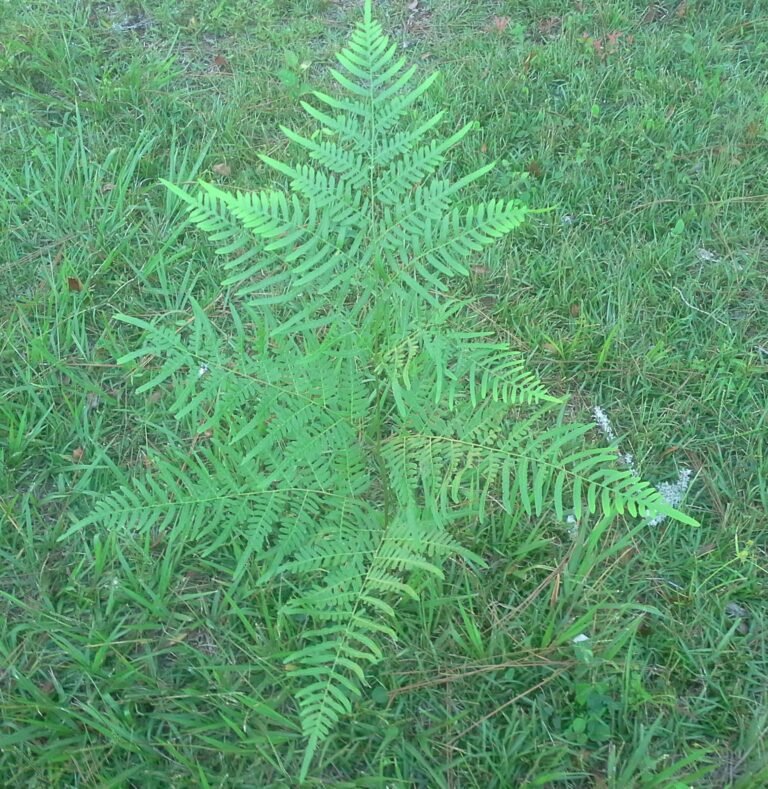
Common Names, Latin Name, and Family
Common names include tailed bracken fern, bracken fern and pasture brake.
The Latin name is Pteridium aquilinum var. pseudocaudatum.
“The name comes from the Greek pteridion which means “small fern”. [1]
It is found in the Dennstaedtiaceae, or bracken, family.
Form
Tailed bracken fern is a native, perennial, fern that spreads by underground runners and the thin stems appear along these runners and can come up anywhere along them.
This fern does not form clumps, but it does form a colony of many plants in any given area.
Leaves
Fronds (leaf): The fronds are usually 3 feet in height but have the capability to reach up to twice that height at 6 feet. They are course to the touch and grow in rows along the stems.
Petiole (leaf stalk): Petiole length ranges from 4 inches to 3 feet. It is smooth to the touch and can be green or brown in color.
Rachis (leaf stem): The rachis is smooth and does not have hairs.
Blade (leaf blade): The leaf blades are bi to tri-pinnately compound with the overall shape being triangular. They range from 10 inches to 6 feet in length and 6 inches to 3 feet in width.
Pinnae (leaflets): The leaflets are long and narrow with blunt ends.
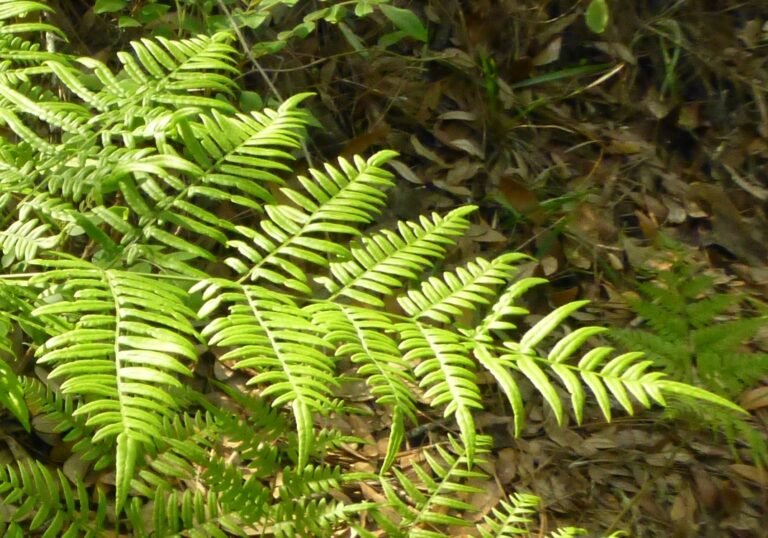
Spores
The spores mature in mid to late summer and are found in the sori.
The sori is the structure on the leaf that contains the spores.
On the tailed bracken fern the sori are located along the edge of the leaf and causes the leaf margins to curl over.
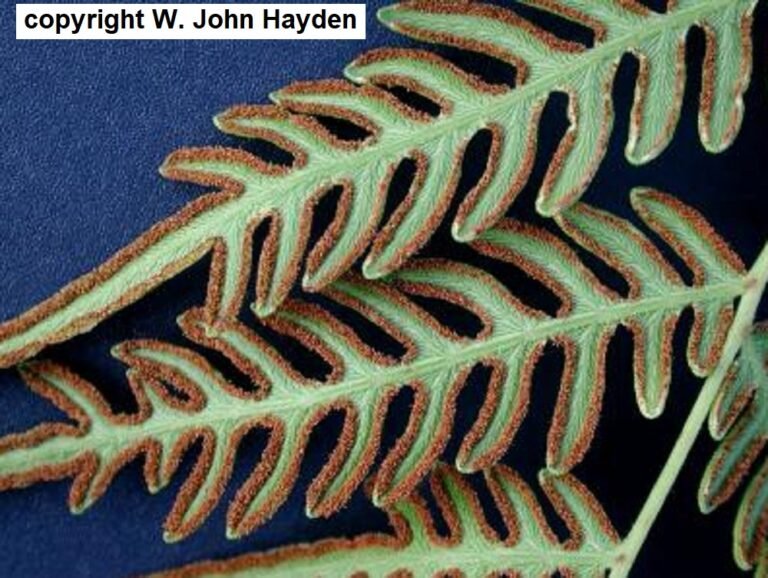
Habitat
Tailed bracken fern is found naturally occurring in dry and moist woodlands, roadsides, pastures, and pinelands.
Native Range
Tailed bracken fern (Pteridium aquilinum var. pseudocaudatum) is found naturally occurring in every Florida county except Okeechobee.
It can be found in the following states: AL, AR, CT, DC, DE, FL, GA, IL, IN, KS, KY, LA, MA, MD, MO, MS, NC, NJ, NY, OH, OK, PA, SC, TN, TX, VA, VT, and WV.
Landscape Use
Bracken fern works great in dry shady areas of the landscape.
It is a wonderful fern to grow under pine trees where other ferns will not grow because of the dense layer of pine needles.
It is a traveling fern and will not be contained so it is not suitable for formal gardens, garden beds, or containers.
It is best for naturalized areas of your green space.
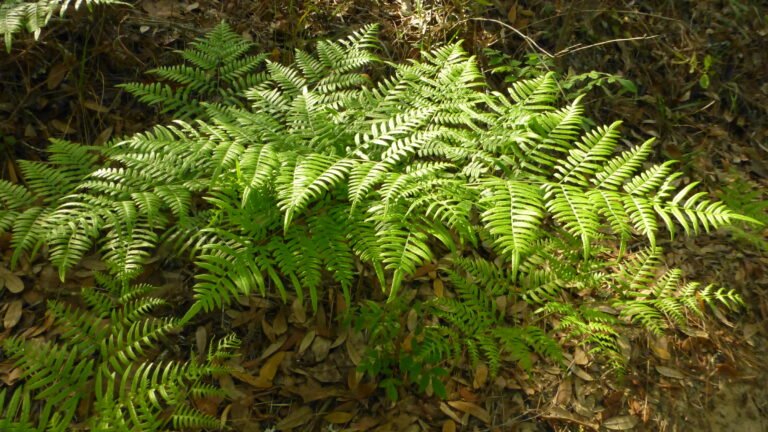
Wildlife Use
Ferns of all types provide hiding, and foraging, places for a variety of wildlife such as frogs, lizards, damsel flies, and dragonflies.
Few animals eat bracken fern except for an occasional browse by wild turkeys, rabbits and deer.
Human Use
Although many people purport to eat the fiddleheads it may not be such a good idea.
“Warning: Cooking recommended. Raw plant contains an enzyme which, when ingested in sufficient quantities, destroys vitamin B1 (thiamine). Mature fronds poisonous to cattle. Also, recent evidence from Japan suggests a link between the excessive consumption of bracken over an extended period of time and a high incidence of stomach cancer.” [2]
Too many mature fronds can cause your livestock to become very ill so if it is coming up in your pasture remove it.
“American Indians used root tea for stomach cramps, diarrhea, smoke for headaches; poulticed root for burns and sores, caked breasts; wash to promote hair growth; astringent tonic. Historically root tea used for worms. Warning: Poisonous in excess doses – disturbs thiamine metabolism. Recently reported to cause cancer in grazing animals; contains at least 3 carcinogens.” [3]
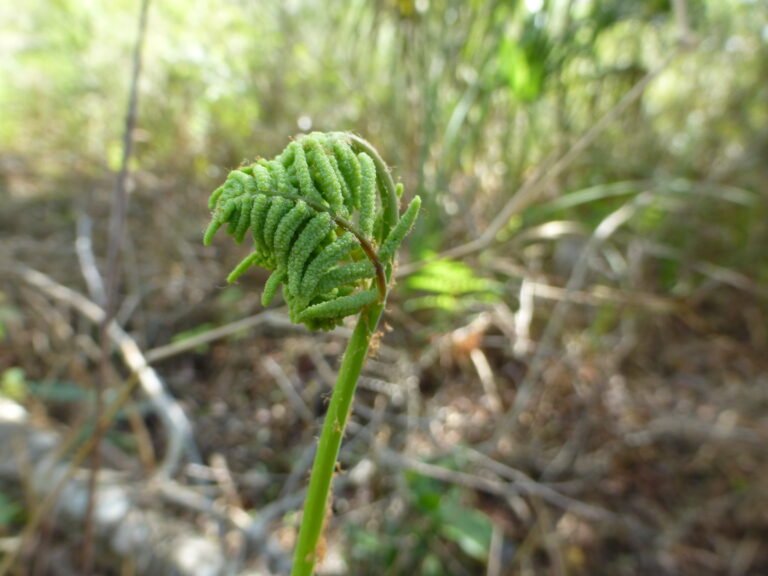
Propagation
Transplanting may be successful if you can obtain plants with sufficient roots. Keep watered until new growth appears and then it should require zero maintenance.
Further Reading
The United States Forest Service has a great article called Fern Structure if you’re interested in learning more about ferns. Check out –
https://www.fs.usda.gov/wildflowers/beauty/ferns/structure.shtml#:~:text=Sori%20(singular:%20sorus)%20are,indusia%20(singular:%20indusium).
The University of Florida has a great article called Natural Area Weeds: Distinguishing Native and
Non-Native “Boston Ferns” and “Sword Ferns”
(Nephrolepis spp.)
https://ufdcimages.uflib.ufl.edu/IR/00/00/41/78/00001/AG12000.pdf
Footnotes
[1] Nelson, Gil. Ferns of Florida. Pineapple Press. 2000
[2] Peterson, Lee Allen. A Field Guide to Edible Wild Plants. Houghton Mifflin Co., Boston. 1977
[3] Foster, Steven and Duke, James A.. Peterson Field Guide To Medicinal Plants & Herbs Of Eastern & Central N. America: Third Edition. Mariner Books. 2014